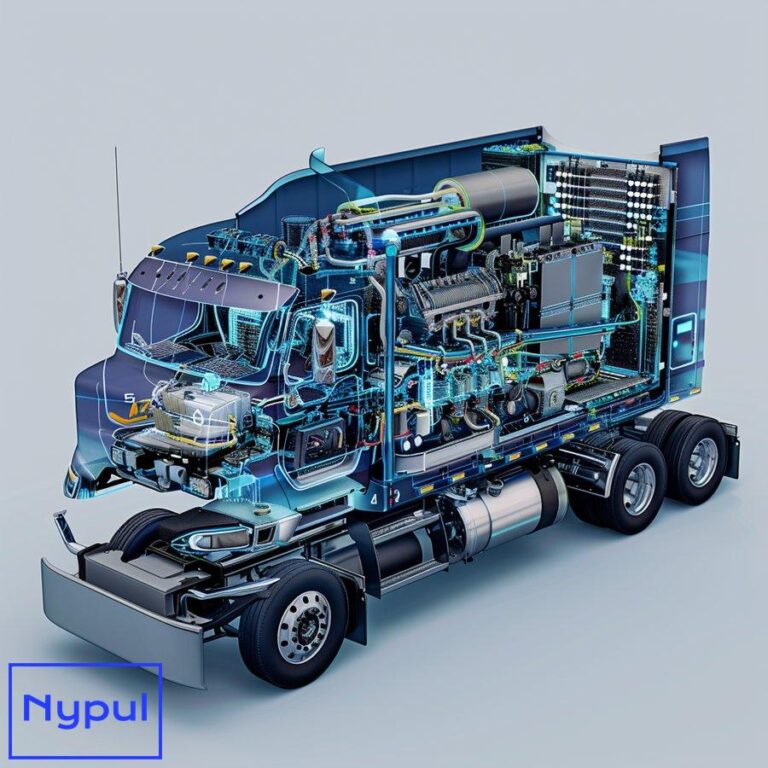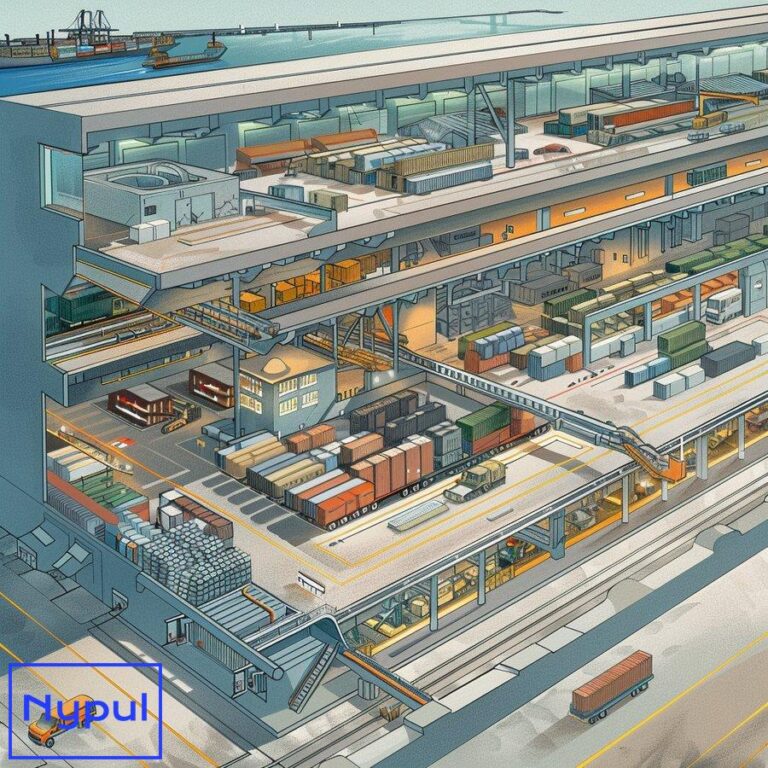What Is the Opposite of Drayage
What is drayage and why is it important in logistics?
Drayage refers to the short-distance transportation of goods, typically over a distance of less than 200 miles. This process is essential in logistics as it involves the movement of cargo from ports, rail yards, or warehouses to their final destinations. Drayage serves as a critical link in the supply chain, connecting various transportation modes such as trucking, rail, and shipping.


The importance of drayage in logistics can be attributed to several factors:
-
Facilitating Trade: Drayage enables the efficient movement of goods from international shipping points to local distribution centers, supporting global trade.
-
Reducing Transit Times: By providing quick transport solutions, drayage minimizes delays in the supply chain, ensuring that products reach their destinations promptly.
-
Enhancing Inventory Management: Drayage services allow businesses to manage their inventory more effectively, as they can quickly replenish stock based on demand.
Drayage operations are typically characterized by their reliance on specialized trucking services, which are equipped to handle containerized cargo and other freight types. This specialization allows for seamless transitions between different transportation modes, ensuring that goods are moved efficiently and safely.
How does long-haul transportation differ from drayage?
Long-haul transportation and drayage serve different purposes within the logistics framework. Understanding their distinctions is vital for businesses aiming to optimize their supply chain operations.
-
Distance and Scope: Long-haul transportation covers distances typically exceeding 250 miles, often involving interstate or cross-country travel. In contrast, drayage focuses on short-distance moves, usually within a specific metropolitan area or region.

-
Transportation Modes: Long-haul transportation often involves larger freight carriers, such as trucks or trains, that are designed for extended travel. Drayage, on the other hand, primarily utilizes trucks that are suited for local deliveries and pickups.
-
Operational Complexity: Long-haul transportation may require more complex logistics planning, including route optimization and fuel management. Drayage operations tend to be simpler, focusing on quick pickups and deliveries.
| Feature | Drayage | Long-Haul Transportation |
|---|---|---|
| Distance | Less than 200 miles | Over 250 miles |
| Transportation Modes | Primarily trucks | Trucks, trains |
| Operational Complexity | Relatively simple | More complex |
Understanding these differences allows businesses to select the appropriate transportation method based on their specific logistical needs.
What are the key characteristics that set drayage apart from other transportation methods?
Drayage has unique characteristics that distinguish it from other transportation methods. These features contribute to its effectiveness in the logistics industry.
-
Short-Distance Focus: Drayage specializes in short-distance transport, making it ideal for moving goods between ports, rail yards, and local warehouses.

-
Container Handling Expertise: Drayage operators are skilled in handling containerized freight, which is essential for efficient loading and unloading at shipping terminals.
-
Rapid Turnaround Times: Drayage services prioritize quick pickups and deliveries, reducing the time goods spend in transit.
-
Intermodal Connectivity: Drayage plays a vital role in intermodal transportation, facilitating the seamless transfer of goods between different modes of transport, such as ships, trucks, and trains.
-
Regulatory Compliance: Drayage operators must adhere to various regulations and standards, including those related to safety, emissions, and cargo handling.
These characteristics make drayage an indispensable component of the logistics landscape, particularly in regions with high volumes of container traffic.
How do fixed route services contrast with drayage operations?
Fixed route services and drayage operations represent two distinct approaches to transportation within the logistics sector. Understanding their differences can help businesses determine the most suitable option for their needs.
-
Route Flexibility: Drayage operations are characterized by their flexibility, allowing for customized routes based on specific customer requirements. In contrast, fixed route services operate on predetermined paths, limiting adaptability.

-
Service Frequency: Drayage services can be scheduled as needed, providing on-demand transportation solutions. Fixed route services, however, follow a regular schedule, which may not align with urgent delivery needs.
-
Cost Structure: Drayage typically involves variable pricing based on distance, cargo type, and service level. Fixed route services often have a standardized pricing model, which can be advantageous for budgeting but may not accommodate unique logistical demands.
| Feature | Drayage | Fixed Route Services |
|---|---|---|
| Route Flexibility | Highly flexible | Predetermined routes |
| Service Frequency | On-demand | Regular schedule |
| Cost Structure | Variable pricing | Standardized pricing |
These contrasts highlight the importance of evaluating transportation options based on specific logistical requirements and operational goals.
What role does direct shipment play as an alternative to drayage?
Direct shipment serves as an alternative to drayage by offering a different approach to transporting goods. This method involves shipping products directly from the manufacturer or supplier to the end customer, bypassing intermediate handling points.
-
Efficiency Gains: Direct shipment can reduce transit times by eliminating the need for drayage, allowing for faster delivery of goods to customers.
-
Cost Savings: By minimizing handling and transportation steps, direct shipment can lower overall logistics costs, making it an attractive option for businesses.
-
Simplified Logistics: Direct shipment reduces the complexity associated with managing multiple transportation modes, streamlining the supply chain process.
However, direct shipment may not be suitable for all scenarios. For example, businesses that require frequent inventory replenishment or have specific delivery windows may still rely on drayage services to meet their logistical needs.
How do drayage and its contrasting methods work together in the supply chain?
Drayage and its contrasting methods, such as long-haul transportation and direct shipment, often work in tandem within the supply chain to create a cohesive logistics strategy.
-
Intermodal Transportation: Drayage serves as the connecting link between various transportation modes, enabling efficient movement of goods from ports or rail yards to their final destinations. Long-haul transportation can then take over for longer distances, while direct shipment may be employed for specific customer orders.


-
Inventory Management: Businesses can leverage drayage to maintain optimal inventory levels by quickly replenishing stock based on demand. This approach can be complemented by long-haul transportation for bulk shipments and direct shipment for immediate customer needs.
-
Cost Optimization: By strategically integrating drayage with other transportation methods, businesses can optimize their logistics costs. For instance, using drayage for local deliveries and long-haul transportation for regional distribution can create a balanced approach to managing expenses.
| Method | Role in Supply Chain |
|---|---|
| Drayage | Short-distance transport |
| Long-Haul Transportation | Long-distance transport |
| Direct Shipment | Direct delivery to customers |
This collaborative approach enhances overall supply chain efficiency, allowing businesses to respond effectively to market demands.
What factors should be considered when choosing between drayage and other transportation services?

Selecting the appropriate transportation service requires careful consideration of various factors. Businesses must evaluate their specific logistical needs to make informed decisions.
-
Distance Requirements: The distance between the origin and destination plays a significant role in determining whether drayage or another transportation method is more suitable. For short distances, drayage is often the preferred choice.
-
Cargo Type: The nature of the cargo being transported can influence the decision. Drayage is particularly effective for containerized freight, while other methods may be better suited for bulk or specialized cargo.
-
Delivery Timelines: Urgency is a critical factor. If rapid delivery is essential, drayage may be the best option, while long-haul transportation or direct shipment may be considered for less time-sensitive deliveries.
-
Cost Considerations: Analyzing the cost structures of different transportation methods is vital. Businesses should assess the total cost of ownership, including transportation, handling, and any potential delays.
-
Regulatory Compliance: Understanding the regulatory environment is essential, especially for businesses operating across state or international borders. Compliance requirements can vary significantly between drayage and other transportation methods.
| Factor | Considerations |
|---|---|
| Distance Requirements | Short vs. long distances |
| Cargo Type | Containerized vs. bulk |
| Delivery Timelines | Urgent vs. non-urgent |
| Cost Considerations | Total cost of ownership |
| Regulatory Compliance | Varies by transportation type |
By carefully evaluating these factors, businesses can make strategic decisions that enhance their logistics operations and improve overall supply chain performance.
This comprehensive analysis of drayage and its contrasting methods provides valuable insights for businesses seeking to optimize their logistics strategies. Understanding the nuances of each transportation method can lead to more efficient operations and better service delivery.






